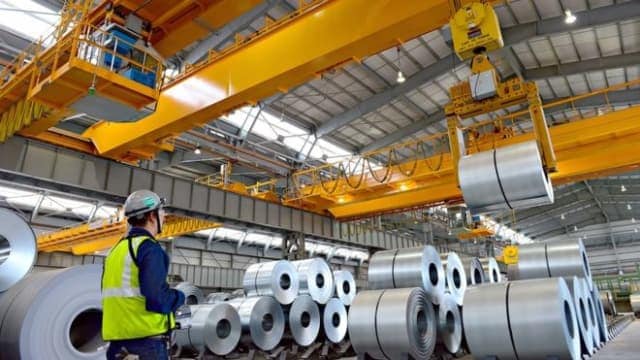As surprising it might seem, the biggest product today of the steel industry isn’t steel. It’s carbon. On average, each ton of steel produced results in 1.8 tons of CO2, a figure that has remained constant over the past decade. Now, the industry seeks to change by developing fossil-free steel.
The impact of carbon-free steel is so great that it could single-handedly bring down the national emissions of Finland (by 7%) and Sweden (by 10%).

Steel is an important part of modern life. It has become key in construction, machinery, transport, and household goods. But iron, the main material of steel, is obtained from iron ore — and the processing stage requires a lot of energy.
Fossil fuels today are the single viable way to process iron ore at a scale to get the iron needed to make steel.
During the past two decades, there has been a massive increase in steel production and China is the main reason behind it. The country is currently responsible for half of the global output of steel and uses the traditional process route of cooking plant, to furnace to casting.
To deal with that situation, steelmakers around the world are working to create new technologies that can bring down the carbon intensity of the sector. This includes moving to cleaner electric arc furnaces, replacing coal with natural gas and transforming carbon waste gases into biofuels.
ArcelorMittal, the world’s largest steelmaker, is currently building a $70 million demonstration plant in Hamburg, which the company claims it’s the first of its kind. The company will use hydrogen obtained from offshore wind farms to reduce ore into iron pellets, which will then be melted into liquid metal.
Nevertheless, the company believes commercializing the cleaner steel won’t be an option for another 20 years, as production costs up to 90% more. But Swedish steelmaker SSAB doesn’t agree.
The company has a similar project and thinks carbon-free steel will be competitive in the future, and already has concrete plans for carbon-free steel.
Back in 2016, SSAB joined with LKAB, Europe’s main iron ore producer, and Vattenfall, a large electricity producer in Europe, to create HYBRIT, a program that wants to revolutionize steel-making. The goal is to replace coal with hydrogen and launch fossil-free steel in 2026 to the market.
“We are tightening up our original goal from the original 2035. We have promised our customers that we will have fossil-carbon-free steel for the European and North American markets in 2026. We are rebuilding our factories and finalizing everything by 2040”, promises Mr. Harri Leppänen, Director of Environment of SSAB.
Even before a solution to fossil-free steel is implemented, SSAB hopes to cut its CO2 emissions in Sweden by 25% by 2025, converting its blast furnace in Oxelösund, Sweden to an electric one. Then, between 2030 and 2040 other furnaces will also be converted, reaching carbon neutrality in 2045.
Despite the attempts from companies, there are challenges ahead. Having a ready supply of hydrogen that can make steelmaking truly carbon-free will difficult, considering the large volume that would be needed to support a massive upscaling in use by the steel industry.
At the same time, hydrogen will also have to be produced using alternative processes. Now around 95% of the hydrogen is described as grey, meaning it’s produced by extracting natural gas from fossil fuels. That will have to change if the plan is to use hydrogen on a large scale in the steel sector.
“It’s very clear that if we want to reach [emissions reduction targets] and keep global warming to 2C, steel would also need to become more or less emissions-neutral,” said Nicole Voigt of Boston Consulting Group to the Financial Times.






